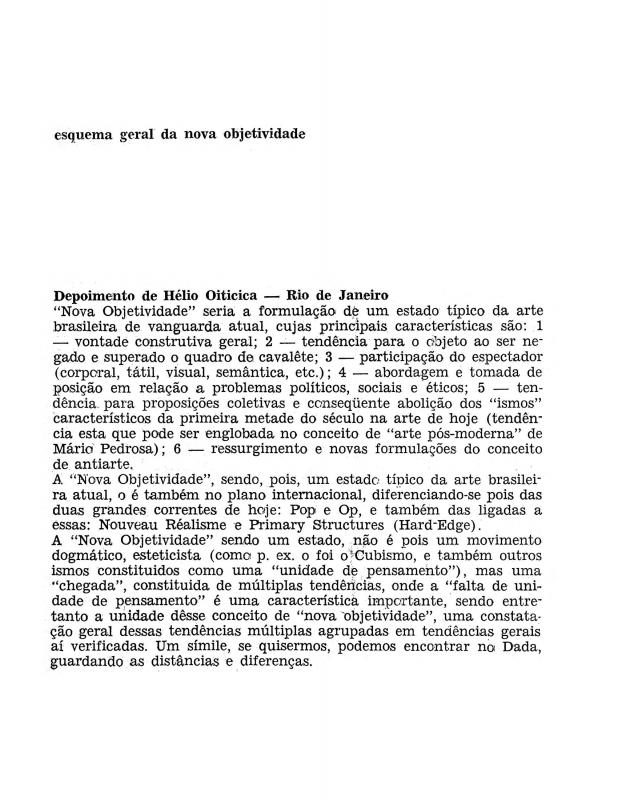Derived from the basic tenets of neo-concrete art, as expressed in its 1959 Manifesto, the connection between life and work became an essential component of the works of the movement’s most radical members: Hélio Oiticica and the two Lygias, Clark and Pape. In Oiticica’s case, the transition from a viewer’s “simple and structural” (that is, passive) involvement to an active (that is, “sensory”) participation meant steering art toward everyday life experience. This behavior blazed a trail that helped to encourage ex-viewers to exercise their freedom. The artist acknowledged drugs, since he presented his work together with the movie director Neville D’Almeida under the title Cosmococas (1970?73). In Oiticica’s opinion, any individual’s quest for personal expression must be considered “an art.” Going beyond the normal sensory level, Oiticica believes that the experimental exploration of one’s deeper consciousness leads to “super-sensory” experience.
Hélio Oiticica (1937–80) was a Brazilian Neo-Concrete artist. He started studying painting with Ivan Serpa in 1954 at the Museu de Arte Moderna do Rio de Janeiro. He later joined the Grupo Frente and the Neo-Concrete movement. In addition to his geometric paintings, which he worked on while he was studying with Serpa and was a member of the Grupo Frente, Oiticica produced performance and participatory art. His Parangolés (1964)—capes made with fabrics and recycled materials—were worn by the Mangueira Samba School during their performances. Oiticica also created immersive spaces, such as Nucleus (1959–60), which was an installation constructed from suspended painted wooden slats inspired by the Constructivism of Piet Mondrian. In 1967 Oiticica created the immersive environment Tropicália at the Museum of Modern Art in Rio de Janeiro. Tropicália was an installation consisting of rooms with plants and materials such as water, sand and stones, a parrot, a television set, and various other elements that were representative of Brazilian popular culture. The environment was designed to promote sensory stimulation. Oiticica applied the same principles to Eden, the installation he created in 1969 at the Whitechapel Gallery in London. The name Tropicália was used by Brazilian musicians to describe a new style that combined international music and pop with traditional Brazilian music. The term “Tropicália” was absorbed into popular Brazilian culture and came to signify a uniquely Brazilian essence. In 1970 Oiticica took part in the group exhibition Information at the Museum of Modern Art in New York.
For more examples of Oiticica’s thoughts on Brazilian art in the late 1960s and early 1970s, see the essay “Esquema geral da nova objetividade” [doc. no. 1110372], and the article “A obra aberta” [doc. no. 1110619].


